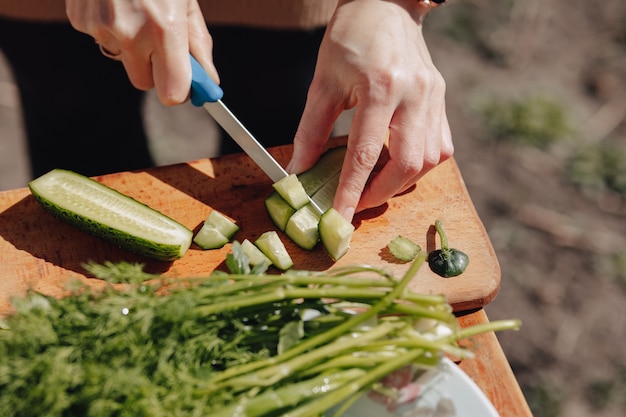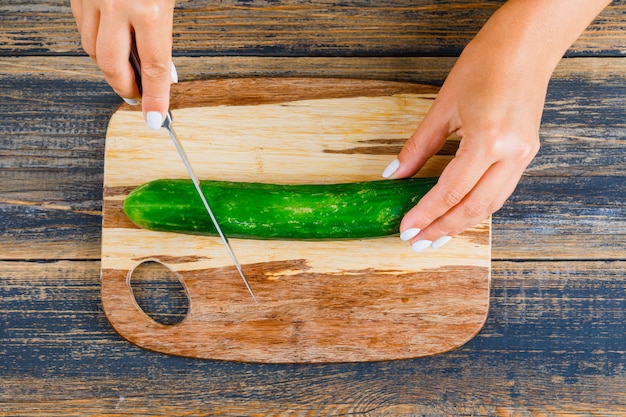Right, let’s talk asparagus. I’m not talking about the supermarket kind, all limp and pale – I’m talking about the real deal, the kind you get straight from the farm, bursting with flavour and vibrant green. The kind that makes you want to grab a bunch and eat it raw, right there in the field.
This is a journey from farm to table, a celebration of this spring delicacy. We'll cover everything from picking the perfect bunch to mastering the art of cooking it, exploring its nutritional value, and even delving into its cultural significance. It's a personal journey, filled with my own experiences, tips, and a good dose of enthusiasm for this delicious vegetable.
(Part 1) The Asparagus Hunt

Seeking the Perfect Spear
There's something truly exhilarating about being in a field of asparagus. The air is filled with the scent of fresh earth, the sun warms your face, and you're surrounded by rows of these green spears just begging to be picked. It's like a treasure hunt, but instead of finding gold, you're finding the perfect asparagus.
Here's what I look for when selecting my bounty:
Firmness: The spears should be firm to the touch, not floppy or limp. This indicates freshness and good quality.
Colour: Look for a bright, vibrant green. Avoid any asparagus that's yellowish or brown, as this suggests it's past its prime.
Size: If you're after a robust flavour, go for thicker spears. Thinner ones tend to be more tender and delicate in taste.
Tips: The tips should be tightly closed, not open or wilted. This means the asparagus is young and hasn't started to get tough.
My Favourite asparagus farm
There’s this little farm near my house, run by a lovely family who have been growing asparagus for generations. They’re the kind of people who genuinely care about their produce, and it shows in the quality of their asparagus. The smell alone is enough to make your mouth water. The best part? They let you pick your own, which is a fantastic experience. You get to choose the best spears, and there's a real sense of satisfaction knowing you've personally selected your meal.
Storing Your Asparagus Treasure
Once you’ve got your precious haul home, it’s crucial to store it properly to keep it fresh and flavourful.
Humidity: Asparagus likes to breathe, so don’t wrap it tightly. A loose, breathable container or even just a damp paper towel will do the trick.
Temperature: Store it in the fridge, but not in the crisper drawer. The humidity there can make it go limp. The fridge's main compartment is ideal.
Time: Ideally, use it within a day or two for the best flavour. But, if you need to keep it longer, try storing it upright in a glass of water, similar to how you'd store cut flowers.
(Part 2) Preparing for the Feast

Trimming the Tips – The First Step
Now, let's get down to business. You'll need to trim the bottom of your asparagus spears. This is important because the ends can be tough and woody, making them unpleasant to eat.
Visual Inspection: Hold the spear and look for where the colour changes from white to green. That's your cutting point. The white part is typically the tough, woody section.
Snap Test: If you're unsure, try snapping the spear. It should break cleanly where the woody part ends. This is a simple and reliable method.
Washing and Peeling – Getting Ready for Cooking
Once you've trimmed the ends, give them a good wash. Don't worry about peeling them if they're thin, but if they're thicker, you might want to peel them lightly. This helps remove any tough outer layer and makes them even more tender. To peel, use a vegetable peeler and gently remove the tough outer skin from the bottom portion of the spear, leaving the tender tips intact.
Recipes: A World of Delicious Possibilities
Asparagus is such a versatile vegetable. You can roast it, grill it, steam it, sauté it, or even eat it raw! The possibilities are truly endless, and there's a method for every taste preference.
Here are a few of my favourite ways to cook asparagus, each showcasing its unique flavour profile:
roasted asparagus with Lemon and Garlic: This is a simple yet delicious way to cook asparagus. Just toss the spears with olive oil, lemon juice, garlic, salt, and pepper, and roast in a hot oven until tender. The roasting brings out the natural sweetness of the asparagus, while the lemon and garlic add a bright and savory touch.
Grilled asparagus with balsamic glaze: This is perfect for a summer barbecue. Brush the spears with olive oil and balsamic glaze, then grill them over medium heat until charred and tender. The smoky flavour from the grill, combined with the sweet and tangy balsamic glaze, creates a truly irresistible dish.
asparagus soup: This is a creamy and comforting soup that’s perfect for a chilly day. Simply blend cooked asparagus with broth, cream, and seasonings. The soup is both light and flavourful, with the asparagus providing a subtle sweetness that complements the other ingredients.
(Part 3) cooking techniques – Mastering the Art

Roasting – Bringing Out the Sweetness
Roasting brings out the sweetness of asparagus and creates a slightly caramelized flavour. It's a simple and versatile method that allows for plenty of customization.
1. Preheat your oven: To about 400°F (200°C). A hot oven ensures that the asparagus cooks quickly and evenly, resulting in tender-crisp spears.
2. Prepare your asparagus: Trim, wash, and toss the spears with olive oil, salt, and pepper. This simple seasoning allows the asparagus' natural flavours to shine.
3. Roast: Spread the asparagus on a baking sheet and roast for 10-15 minutes, or until tender-crisp. You can check for doneness by piercing a spear with a fork. If it offers little resistance, it's ready.
Grilling – Adding a Smoky Touch
Grilling gives asparagus a smoky flavour and beautiful grill marks, making it perfect for outdoor dining.
1. Prepare your grill: Preheat a gas or charcoal grill to medium heat. Ensure that the grill grates are clean and lightly oiled to prevent sticking.
2. Prepare your asparagus: Trim, wash, and brush the spears with olive oil, salt, and pepper. This will help them to cook evenly and prevent them from drying out.
3. Grill: Place the spears on the grill and cook for 3-5 minutes per side, or until tender and slightly charred. Turn the spears once they develop grill marks to ensure even cooking.
Steaming – Preserving Delicate Flavours
Steaming is a gentle cooking method that preserves the delicate flavour and nutrients of asparagus. It's perfect for those who prefer a less intense flavour and want to retain the vibrant green colour.
1. Fill a pot with water: Just enough to cover the bottom. You'll be steaming the asparagus, not boiling it, so the water level needs to be low.
2. Bring to a simmer: Add a steamer basket to the pot, then bring the water to a simmer. The steam will gently cook the asparagus without overcooking it.
3. Steam: Place the asparagus in the steamer basket and steam for 5-7 minutes, or until tender-crisp. The asparagus is done when it's easily pierced with a fork.
Sautéing – Quick and Easy with Flavour
Sautéing is a quick and easy way to cook asparagus, and it allows you to add flavour with other ingredients. It's a great option for a weeknight meal or when you need a fast and delicious side dish.
1. Heat a pan: Over medium heat, add a little olive oil to a large skillet. Use a good quality olive oil to enhance the flavour of the asparagus.
2. Sauté: Add the trimmed and washed asparagus to the pan and sauté for 5-7 minutes, or until tender-crisp. Stir occasionally to ensure even cooking.
3. Season: Season with salt, pepper, and any other spices you like. You can also add garlic, shallots, or other vegetables to the pan for additional flavour.
(Part 4) Asparagus Beyond the Plate – Expanding its Potential
Asparagus in Recipes – A Culinary Star
Asparagus is a superstar ingredient in many dishes. It adds a delightful crunch and a burst of freshness to a wide range of culinary creations.
Pasta: Throw it into a pasta dish with garlic, olive oil, and Parmesan cheese for a classic Italian flavour.
Quiches and Tartlets: Use it as a filling in savory tarts and quiches for a touch of elegance and earthy flavour.
Salads: It adds a beautiful green touch and a delicious flavour to any salad.
Risotto: Cook it with your risotto to add a unique flavour and texture. Asparagus pairs beautifully with the creamy, rich risotto, creating a harmonious blend of flavours.
Asparagus Preservation – Enjoying it Year-Round
There are ways to enjoy asparagus beyond the peak season. These methods allow you to capture its deliciousness and enjoy it throughout the year.
Freezing: Blanch asparagus spears in boiling water for 2-3 minutes, then plunge them into ice water. Once cooled, pat them dry and package them in freezer-safe bags. Frozen asparagus can be used in soups, stews, and stir-fries.
Pickling: Asparagus can be pickled for a tangy and crunchy snack. The pickling process preserves the asparagus while giving it a unique flavour profile.
(Part 5) Asparagus and Health – A Nutritious Delicacy
Nutritious Delights – A Bounty of Goodness
Asparagus is packed with nutrients, making it a healthy addition to your diet.
Vitamins: It's a good source of vitamins K, C, and A. Vitamin K is essential for blood clotting, vitamin C is an antioxidant, and vitamin A is crucial for vision and skin health.
Minerals: It contains minerals like folate, potassium, and copper. Folate is important for cell growth and development, potassium helps regulate blood pressure, and copper is involved in energy production.
Antioxidants: It’s also rich in antioxidants that may help protect your cells from damage. Antioxidants help combat free radicals, which can contribute to aging and disease.
Potential Health Benefits – A Boon to Wellbeing
There’s evidence that asparagus may offer various health benefits, contributing to overall well-being.
Improved digestion: The high fiber content can promote digestive health by adding bulk to stools and preventing constipation.
Reduced inflammation: Some studies suggest that asparagus may help reduce inflammation in the body. This could be due to its antioxidant and anti-inflammatory properties.
Better blood sugar control: It may help regulate blood sugar levels. The fiber in asparagus slows down the absorption of sugar into the bloodstream, preventing rapid spikes in blood sugar.
(Part 6) Asparagus and the Environment – Sustainable Choices
Sustainable Farming – Supporting the Earth
I’m a big believer in sustainable farming practices. It’s not just good for the environment, but it also ensures that we have healthy food for generations to come.
Organic Asparagus: Choosing organic asparagus means that it’s grown without the use of synthetic pesticides and fertilizers. This reduces the environmental impact of agriculture and promotes biodiversity.
Local Asparagus: By buying locally, you’re supporting your local farmers and reducing your carbon footprint. Locally sourced asparagus is typically fresher and has a lower environmental impact due to reduced transportation.
Reducing Food Waste – A Collective Effort
Food waste is a huge problem, and it’s something we can all do our part to reduce. By being mindful of our food choices and using leftovers creatively, we can make a difference.
Use the Whole Spear: Don’t discard the bottom part. It can be used to make soups, stews, or stocks. This prevents waste and adds flavour to your dishes.
Freeze the Extras: If you have more asparagus than you can use, freeze it for later. Freezing asparagus allows you to enjoy it even when it's out of season.
(Part 7) Asparagus and Culture – A Culinary HistoryA Culinary History – A Journey Through Time
Asparagus has been enjoyed for centuries, holding a place of honour in various cuisines around the world.
Ancient Times: It was a popular food in ancient Greece and Rome. In ancient Rome, asparagus was considered a delicacy, and it was often served at lavish banquets.
Middle Ages: It was cultivated in monasteries and spread throughout Europe. Monks were known for their cultivation of vegetables, and asparagus became a staple food in many parts of Europe.
Modern Times: It's become a staple in kitchens worldwide. Today, asparagus is enjoyed in countless cuisines and is celebrated as a versatile and flavourful vegetable.
Asparagus in Literature and Art – A Source of Inspiration
This beloved vegetable has been featured in various works of art and literature, inspiring artists and writers for generations.
Paintings: There are many paintings depicting asparagus in still life arrangements. The vibrant green spears often stand out against a backdrop of other vegetables and fruits, adding a splash of colour and vibrancy.
Poetry: Poets have written about the beauty and flavour of asparagus. From its delicate texture to its distinct earthy taste, asparagus has captured the imaginations of poets, who have used it as a metaphor for spring and new beginnings.
Literature: It has been mentioned in novels and short stories. Asparagus has appeared in various literary works, often symbolizing abundance, fertility, and the simple pleasures of life.
(Part 8) Asparagus: A Personal Touch – A Shared Love
My Asparagus Memories – A Taste of Nostalgia
My memories of asparagus are filled with joy.
Family Gatherings: I remember my grandmother’s asparagus soup, a heartwarming and comforting dish. The soup was a family favourite, often served during special occasions and holidays.
Springtime Feasts: I love the feeling of anticipation as the first asparagus of the season arrives at the market. The arrival of asparagus marks the beginning of spring and brings with it a sense of renewal and excitement.
Sharing the Harvest: It’s a joy to share my asparagus bounty with friends and family. Sharing the gift of fresh, homegrown asparagus is a special way to connect with loved ones and enjoy the bounty of nature.
Asparagus: More Than Just a Vegetable – A Symbol of Spring
To me, asparagus is more than just a vegetable; it’s a symbol of spring, of new beginnings, and of the simple pleasures in life. It’s a reminder to appreciate the beauty and bounty of nature and to savour every moment. Asparagus embodies the spirit of spring, its vibrant green colour and fresh flavour a welcome change after the long winter months.
FAQs
What does asparagus taste like?
Asparagus has a distinctive, slightly sweet and earthy flavour. The flavour can vary depending on the variety and how it’s cooked. Some find it to have a delicate, almost vegetal flavour, while others describe it as having a more pronounced, earthy flavour.
How do I know if asparagus is bad?
If asparagus is limp, wilted, or has brown spots, it's probably not good. It's best to choose asparagus that is firm to the touch, with vibrant green spears and tightly closed tips.
How long can I store asparagus in the refrigerator?
You can store asparagus in the refrigerator for up to 3-5 days. For optimal freshness, store it upright in a glass of water or wrap it loosely in a damp paper towel.
What are some good side dishes for asparagus?
Asparagus pairs well with many side dishes, including roasted potatoes, grilled chicken, and salmon. It also complements lighter dishes, such as salads and grilled fish.
How do I prevent asparagus from making your pee smell?
The smell of asparagus pee is caused by a chemical called asparagine. While there’s no surefire way to prevent this, eating asparagus with other foods may help mask the smell. You can also try drinking plenty of water to flush out the chemical.
Everyone is watching

How to Cook Frozen Lobster Tails Perfectly: A Step-by-Step Guide
RecipesLobster. Just the word conjures up images of lavish meals, special occasions, and a taste of luxury. But let's...

Pork Fillet Cooking Time: How Long to Cook It Perfectly
RecipesPork fillet, or tenderloin as it's sometimes called, is a real favourite in our house. It's so versatile, and...

Pigs in a Blanket Cooking Time: How Long to Bake for Perfect Results
RecipesAh, pigs in a blanket. Just the name conjures up images of those delightful little parcels of crispy pastry en...

The Ultimate Guide to Cooking Delicious Frankfurters
RecipesLet's face it, we all love a good frankfurter. It's a classic, simple, and always satisfying. But let's be rea...

Wolf Meat Recipes: A Guide to Cooking Wild Game
RecipesLet's be honest, you don't see wolf meat at your local butcher shop every day. It's a bit of a wild card, but ...
